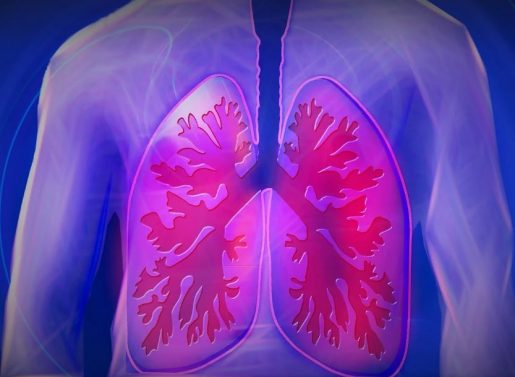Improving COPD care: A call to action
Chronic obstructive pulmonary disease (COPD), a common lung disease causing restricted airflow and breathing problems, remains a major public health issue across the Americas, with significant disparities in disease prevalence, morbidity and mortality both between and within nations. Despite its high prevalence, COPD often remains underdiagnosed and inadequately treated, particularly in vulnerable populations. Working at our county hospital, Ben Taub Hospital, I encounter daily challenges in accessing COPD therapy for the underserved population. This experience ignited my determination to address this issue and seek out potential solutions.
To promote COPD health equity across the Americas, I collaborated with Dr. Juan Celedon from the University of Pittsburgh and, on behalf of the American Thoracic Society, alongside the Brazilian, Latino-American and Canadian Thoracic Societies, to author an article that calls for urgent action to address these gaps in COPD care.
The burden of COPD in the Americas
COPD is the third leading cause of death worldwide, and its impact is profoundly felt across the Americas. Factors such as tobacco use, air pollution, infections like tuberculosis and exposure to biomass smoke contribute significantly to the disease’s prevalence. However, access to healthcare and treatment options varies widely. For instance, while some countries offer universal healthcare, access to necessary medications and interventions still can be limited due to cost, availability and policy differences.
Challenges in diagnosis and treatment 
One key challenge in managing COPD is the underutilization of spirometry. This crucial tool measures lung function, specifically the amount and/or speed of air that can be inhaled and exhaled and is crucial for accurate diagnosis. In many regions, particularly in low- and middle-income countries, lack of access to spirometry leads to underdiagnosis or misdiagnosis of COPD. This is further compounded by disparities in access to medications and other treatments, which vary widely based on socioeconomic status, race and geographic location.
Promising directions for improvement
Several actionable items (both clinical and policy approaches) could improve COPD diagnosis and care in the Americas:
- Focus on prevention: To improve COPD management in the Americas, strategies should prioritize historically marginalized groups, such as minoritized populations, migrants, refugees and Indigenous communities, who are at the highest risk for COPD-related morbidity and mortality. These strategies should focus on prevention, early detection and addressing barriers such as language, cultural differences, low health literacy, transportation issues and limited or no health insurance. For example, targeted campaigns and policies to reduce tobacco use among Indigenous populations in the U.S. and Canada could significantly reduce the COPD burden in these communities.
- Increased access to pulmonary function testing (spirometry): Enhancing access to spirometry can significantly improve diagnosis rates, enabling timely and appropriate treatment for COPD patients. This is especially crucial in minoritized and vulnerable populations that are often underserved.
- Improved access to treatment: Ensuring that COPD patients have access to necessary medications and interventions, regardless of their location or socioeconomic status, is vital. Collaborative treatment guidelines adapted to the healthcare systems of each nation can help achieve this goal. This includes expanding eligibility and coverage options for COPD treatment by working with insurers to promote more inclusive screening practices. Policies implementing fixed copayments, income-based deductibles and co-insurance requirements have the potential to decrease medication utilization and increase healthcare utilization.
- Involvement of respiratory societies: Collaborative treatment guidelines developed by respiratory societies across the Americas should be tailored to the specific healthcare systems of each nation or region. Additionally, there should be an emphasis on conducting clinical trials that adequately represent the diverse populations across the Americas to ensure equitable access to new treatments. Finally, respiratory societies in the Americas must actively engage with key stakeholders, including patient-led organizations, professional societies, government agencies, healthcare systems and international health organizations, to advocate for improved access to early detection, diagnosis, and treatment of COPD, especially in underserved and vulnerable populations. They also should play a significant role in educating and training primary care practitioners, who manage most patients with mild to moderate COPD.
Looking ahead
Adaptive trial designs that evolve based on real-time data and the identification of intermediate outcomes are needed. These designs can provide quicker insights into whether a treatment is effective, allowing for faster adjustments to treatment plans. Additionally, leveraging biomarkers, genetic risk factors and related clinical conditions allows healthcare providers to define patient subgroups better and create more personalized treatment plans.
These policy ideas can be implemented at various levels, from national healthcare policies to local public health initiatives, depending on the specific needs and resources of each nation or region.
Together, we can work towards a future where COPD is managed more effectively and patients receive the care they deserve.
By Dr. Francesca Polverino, Lester and Sue Smith Associate Professor of Medicine – Pulmonary, Baylor College of Medicine. She is also a medical spokesperson for the American Lung Association.



